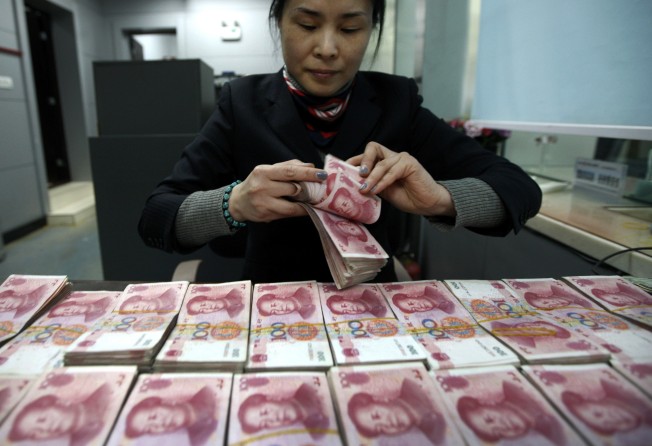China in no rush to follow global interest rate cuts, central bank governor says
- People’s Bank of China (PBOC) chief Yi Gang says Chinese economic conditions are in a ‘reasonable range’ meaning there is no need for major interest rate cuts
- The central bank has cut the reserve ratio requirement three times this year but growth has continued to slow

China is in no rush to follow the interest rate cuts enacted by a number of global central banks in recent weeks despite sluggish domestic economic growth, central bank governor Yi Gang said on Tuesday.
The US Federal Reserve led a global push to lower rates, announcing cuts last week for the second time since late July. This was followed by the European Central Bank, which slashed its deposit rate from minus 0.4 per cent to a record low of minus 0.5 per cent, while also resuming bond purchases to prop up growth within the euro zone.
“At present, there is downward pressure on the world economy. Everyone has recently seen China's economic data, and there are some downside risks. However, overall, based on our assessment, China’s economic conditions are still in a reasonable range,” People’s Bank of China (PBOC) chief Yi said in Beijing.
“We are not in a rush to ease like other central banks, [which are] cutting interest rates or [engaging in] quantitative easing. China’s monetary policy will remain prudent and consistent.”
Yi reiterated that China will not resort to “flood-like” economic stimulus to support the economy, as it did a decade ago in response to the global financial crisis.
“If you want to look at the world, including the monetary policies of developed countries such as the United States, Europe and Japan in the next few years, I have a prediction. That is, looking forward a few years, which particular country, which major economy is maintaining a normal monetary policy and that such an economy will be the highlight of the global economy and will be envied by other markets,” he added.
The European Central Bank has doubled down on its negative rate policy, meaning banks have to pay 0.5 per cent interest simply to deposit their excess cash at the central bank, in a bid to push banks to lend more. As a result, there is a growing debate among global banks over whether commercial banks should consider passing negative rates on to retail depositors.
“I think, in the course of our monetary policy operation, we should welcome that there is room for normal monetary policy, so that we can continue with normal monetary policy as long as possible. This way the development of the economy is sustainable and is beneficial for the people,” Yi said.
Last week, the PBOC trimmed its new benchmark lending rate, the one-year loan prime rate, to 4.20 per cent from 4.25 per cent previously after injecting around 800 billion yuan (US$112 billion) into the banking system through a reserve requirement cut earlier in the month. In China, the vast majority of corporate loans are benchmarked off the one-year loan prime rate.
Yi’s comments show that the PBOC is being cautious about aggressive monetary policy easing because it wants to stretch its resources because of the consideration that the trade war with the US will be a protracted one
“Yi’s comments show that the PBOC is being cautious about aggressive monetary policy easing because it wants to stretch its resources because of the consideration that the trade war with the US will be a protracted one,” said Zhou Hao, senior emerging markets economist at Commerzbank, expects the central bank to keep the rate on its Medium-term Lending Facility (MLF), which is uses to provide liquidity to banks at low cost, unchanged for the rest of the year. “The PBOC also wants to avoid a significant monetary policy easing that would fuel China’s property bubble and shadow banking sector.
“Under the current circumstances, the PBOC is aiming to channel money into the manufacturing sector,” added Zhou, predicting the central bank could cut banks’ reserve ratio requirement ratio several more times this year. “That should help lower the funding loan costs of corporates as the loan prime rate could fall by 5 basis points each time.”
China’s major economic indicators continued to slow in August, with the growth of fixed asset investment, property investment, industrial production, external trade and retail sales all decelerating.
Additional reporting by Karen Yeung